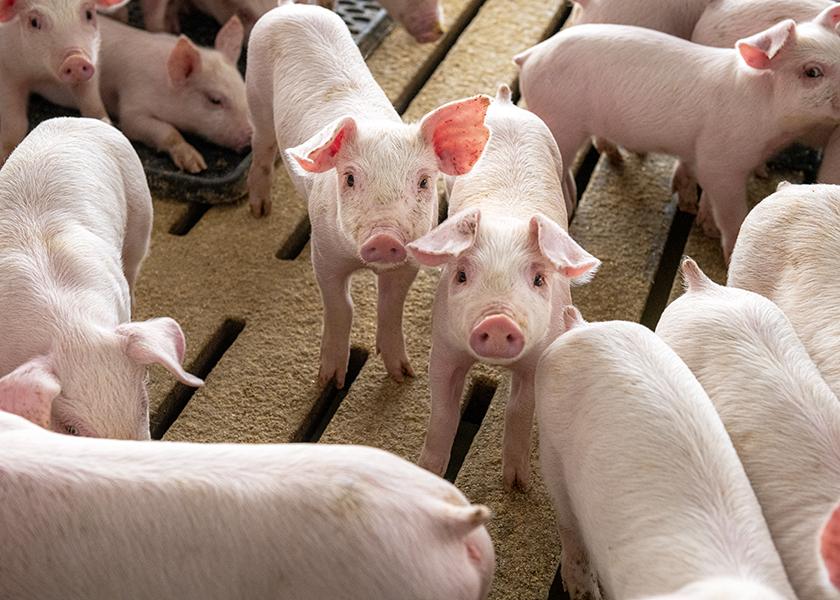High Feed Costs? Review Your Health Program

By Elise Toohill, DVM, Carthage Veterinary Service Ltd.
Higher feed costs mean pork producers are focused on minimizing cost of production and improving feed efficiency. With feed costs expected to grow $10+/cwt in 2021, now is a good time to take another look at your management practices.
Now’s a good time to consider adjusting optimal weights as market opportunities are available and reviewing time off feed protocols, switching gears to save feed cost over time by thorough evaluation of individual ingredients, and watching corn micron size and implementing pelleting where available*.
As you focus on these management factors to decrease feed costs and improve efficiencies, don’t forget to give your health protocols a review to see if interventions are now warranted due to a different return on investment.

Source: CVS Feed Cost Bulletin, Jorge Estrada
Here are three things to consider.
1. Implement PRRS and circovirus health programs.
To maximize feed efficiency and gain, implement a solid health program for porcine reproductive and respiratory syndrome (PRRS) and circovirus. Each of these diseases cause traumatic insult to the pigs’ immune system, yielding in a fairly reliable decrease in average daily gain and more variation throughout the population. Control is often multifaceted as other underlying diseases in the herd could potentially be exacerbated by both of these diseases as well due to their immunosuppressive characteristics.
Circovirus vaccines tend to be very effective, however this may not be the time to risk subclinical infections due to partial vaccine programs. Work with your herd veterinarian to evaluate intervention options for PRRS which may include vaccines, timed mass treatment or individual treatment options to minimize severity of disease.
2. Prioritize diseases that cause sudden and severe late-term mortality.
From my perspective, diseases that cause sudden and severe late-term mortality are the next priority when it comes to impacting growth and performance. Few things impact your bottom line more than losing pigs after such a significant investment has been made. I believe the top diseases to focus on during this time period are Mycoplasma hyopneumoniae, ileitis and erysipelas.
- Mycoplasma hyopneumoniae causes a persistent, non-productive cough that becomes chronic and hits closeout numbers in many places. The main driver is in reduced gain and feed efficiency starting early in the finishing phase that tends to affect a large percentage of the population. However, in more uncontrolled/unstable herds or when complicated by viral diseases, that situation often changes to moderate to severe mortality.
-Lawsonia intracellularis causes ileitis and is similar in that it can present in a mild state as subclinical or it can cause severe and sudden hemorrhagic mortality.
-Erysipelas can be a challenge in herds as it often presents during the marketing period with sudden and severe mortality. We often have limited options to control erysipelas with antibiotics at that point. The options we do have tend to be expensive, however they are often warranted to allow marketing to continue.
We have many tools in the bucket for control of these diseases with vaccines being the priority followed by timed mass treatment or individual treatment protocols on a herd-by-herd basis dependent on timing and severity of disease.
3. Don’t forget biosecurity.
As always, do not lose sight of the importance of consistently executing biosecurity protocols every day to prevent lateral diseases like PRRS and porcine epidemic diarrhea (PED) from being introduced into the herd. Give your biosecurity protocols a fresh evaluation and not only confirm that the science supports the practice in mitigating the threat, but also consider how easy is it to implement the correct protocol day in and day out.
*Estrada, CVS Feed Cost Bulletin Jan 2021
More from Farm Journal's PORK:
Is the Livestock Industry Prepared for a Foreign Animal Disease Outbreak?
What Happens If? An Answer to the Question Everyone’s Asking
COVID-19 Case Rates Still Lower in Packing Plants Than General Population







